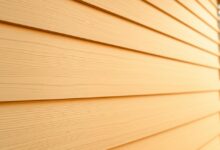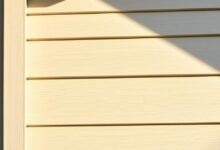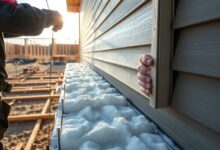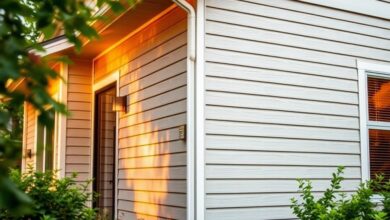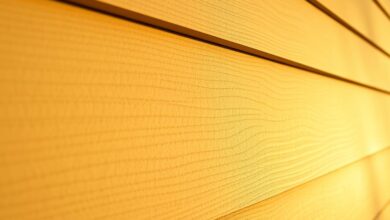Insulated Siding: Is It a Smart Choice for Your Home?
Homeowners are always looking for ways to make their homes better. They want them to be more energy-efficient and cost-effective. Insulated siding is becoming popular because it does just that. It makes your home look great and keeps it warm or cool.
Energy efficiency is key for homeowners. Insulated siding helps a lot here. It can cut down on your heating and cooling bills. This makes it a smart home improvement choice.
But, is insulated siding really worth it? This article will look at the good and bad sides of it. We’ll help you figure out if it’s right for your home.
Key Takeaways
- Insulated siding can improve your home’s energy efficiency.
- It can potentially reduce heating and cooling costs.
- Insulated siding is a valuable home improvement investment.
- It enhances the exterior of your home.
- Consider the benefits and drawbacks before making a decision.
What Is Insulated Siding and How Does It Work?
Insulated siding is a big step forward in building tech. It helps homeowners save energy and money. It’s a better choice than old siding materials.
The Structure and Components of Insulated Siding
Insulated siding has three main parts. First, there’s the outer layer, which can be vinyl or fiber cement. Then, there’s a foam insulation layer. This is usually made from EPS or PIR.
Together, these layers keep your home warm in winter and cool in summer. They stop heat from moving in and out too much.
Different Types of Insulated Siding Materials
There are many kinds of insulated siding. Each has its own special features. Here are a few:
- Insulated vinyl siding is strong and keeps your home warm.
- Fiber cement siding with insulation is green and saves energy.
- Insulated engineered wood siding looks like real wood but keeps your home cozy.
| Siding Material | R-Value | Durability |
|---|---|---|
| Insulated Vinyl | 2.5-3.5 | High |
| Fiber Cement with Insulation | 3.0-4.0 | High |
| Insulated Engineered Wood | 2.0-3.0 | Medium |
How Insulation Layers Function
The insulation layer is key in keeping your home comfy. It stops heat from escaping. This means you don’t have to use as much energy to heat or cool your home.
“The insulation layer in insulated siding is a game-changer for homeowners looking to reduce their energy bills and improve their home’s comfort level.” – Energy Efficiency Expert
In short, insulated siding is great for saving energy and making your home last longer. Knowing how it works helps homeowners choose the best siding for their homes.
The Energy Efficiency Benefits of Insulated Siding
Insulated siding is becoming more popular because it saves a lot of energy. This makes it a great choice for those who want to lower their energy bills. It adds an extra layer of insulation, keeping your home at a steady temperature. This means you don’t have to use as much heat or air conditioning.
R-Value Explained and Why It Matters
The R-value shows how well a material stops heat from passing through. The higher the R-value, the better it insulates. Insulated siding has a higher R-value than regular siding. This means it keeps your home warmer in winter and cooler in summer.
Potential Energy Savings in Different Climates
The amount of energy you save with insulated siding depends on the weather. In cold places, it keeps the warmth in. In hot places, it keeps the heat out. This makes it a good choice for many areas.
Thermal Bridging Prevention
Thermal bridging happens when heat escapes through the siding and walls. Insulated siding stops this by covering the walls with insulation. This reduces heat loss and boosts energy efficiency.
Environmental Impact and Sustainability
Insulated siding is good for the environment and your wallet. It cuts down on energy use, which lowers greenhouse gas emissions. This helps protect our planet.
| Climate | Average Energy Savings | Environmental Impact |
|---|---|---|
| Cold | 20-30% | Reduced carbon footprint |
| Moderate | 15-25% | Lower energy consumption |
| Warm | 10-20% | Less strain on cooling systems |
Choosing insulated siding saves you money and helps the planet. It’s a win-win for homeowners and the environment.
Is Insulated Siding Worth It? Analyzing the Cost-Benefit Ratio
Homeowners often ask if the cost of insulated siding is worth it. To decide, we need to look at the cost, savings, and how it affects property value. This includes the initial cost, long-term savings, and how soon you’ll see a return on investment.
Initial Investment vs. Long-Term Savings
Insulated siding costs more upfront than regular siding. But, it can save you money on energy bills over time. Homeowners can save 15% to 20% on energy costs, depending on the climate and insulation quality.
Return on Investment Timeline
The time it takes to get your money back from insulated siding varies. It depends on local energy prices and the siding’s quality. Usually, you can see your investment pay off in 7 to 10 years through energy savings.
Tax Credits and Energy Efficiency Incentives
Many governments offer tax breaks and incentives for energy-saving home upgrades, like insulated siding. These incentives can lower the upfront cost, making insulated siding more appealing.
Property Value Considerations
Insulated siding can also boost your property’s value. Buyers often pay more for homes with energy-saving features. These homes promise lower utility bills and are better for the environment.
In summary, while insulated siding costs more at first, its long-term benefits are significant. These include energy savings, tax credits, and a higher property value. For many homeowners, it’s a smart investment.
Comparing Insulated Siding to Traditional Siding Options
When picking siding for your home, it’s key to look at insulated siding against vinyl, fiber cement, and wood. This comparison highlights the good and bad of each material.
Vinyl vs. Insulated Vinyl Performance
Vinyl siding is loved for being affordable and easy to care for. But, insulated vinyl adds a layer of insulation for better energy use. The National Association of Home Builders says insulated vinyl can cut heat loss by up to 20% compared to regular vinyl.
Fiber Cement vs. Insulated Alternatives
Fiber cement siding is tough and stands up well to pests and fire. Insulated fiber cement keeps up the durability and adds better heat control. Building Science Corporation points out that insulated siding cuts down on energy loss through walls.
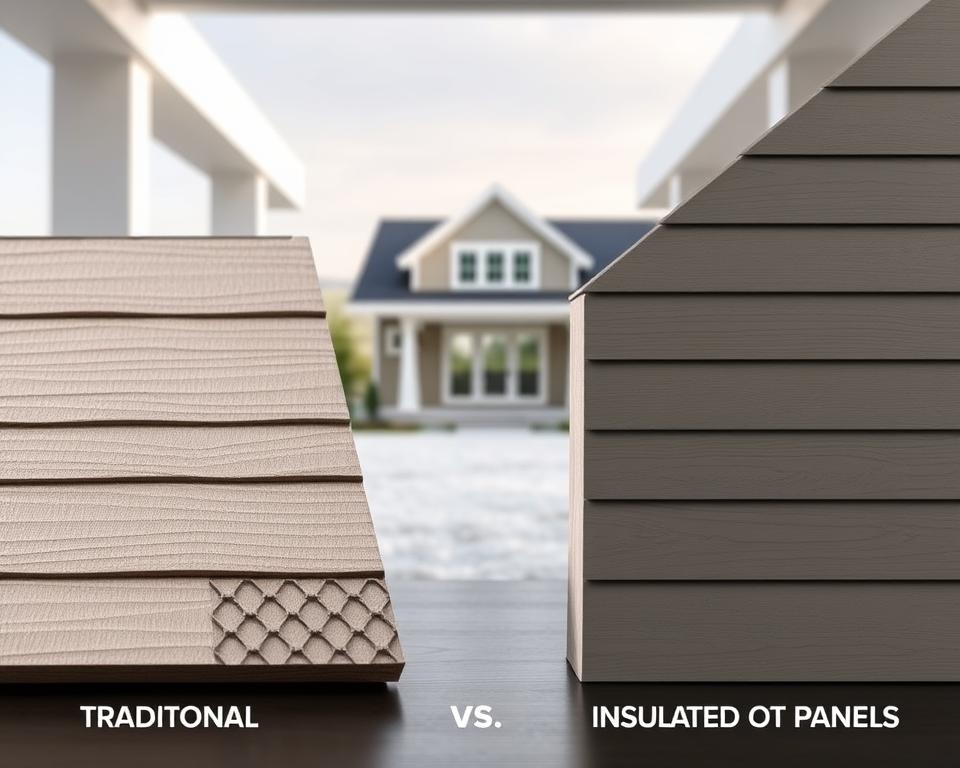
Wood and Other Traditional Materials
Wood siding looks great but needs more care than insulated siding. It’s also more likely to get damaged by pests and weather. Insulated siding is a durable choice that’s easier to maintain.
Performance in Different Climate Zones
Insulated siding does better than traditional siding in different climates. In cold areas, it saves on heating costs. In warm places, it keeps homes cooler, saving on cooling costs.
“Insulated siding is a game-changer for energy efficiency in homes, regardless of the climate.”
This is what a top expert in energy-saving building says.
The Installation Process for Insulated Siding
Getting insulated siding installed right is key. It makes sure the siding works well, saving energy and lasting longer.
Pre-Installation Home Assessment
Before starting, a home check is needed. Look for wall damage or rot and make sure the surface is even and clean. This step helps spot problems that could mess up the installation.
Preparation Steps and Materials Needed
Getting ready is important for a good install. You’ll need siding panels, flashing, and fasteners. Also, clear the area around the house and protect any landscaping or features.
Installation Techniques and Best Practices
Installing involves a few key steps. First, cut the siding panels to size. Then, attach them to the wall with the right fasteners. Following the maker’s guide for spacing and alignment is key for a good fit.
Common Installation Mistakes to Avoid
Even with insulated siding, bad installation can cause big problems. Two big mistakes are wrong fastening and mistakes with the moisture barrier.
Improper Fastening Issues
Using the wrong fasteners can weaken the siding. It’s important to use the fasteners the maker suggests and follow their spacing rules.
Moisture Barrier Errors
A moisture barrier stops water damage. But, mistakes in installing it can cause leaks and harm the structure. It’s critical to make sure the barrier is right and sealed well for the siding to last.
Knowing how to install insulated siding and avoiding common mistakes helps homeowners. This way, they can make sure their siding is installed right, getting the most out of it.
Maintenance and Longevity of Insulated Siding
Keeping insulated siding in good shape is key to its long life. Homeowners can make sure their siding lasts by following the right care steps. This way, it will keep working well for years.
Seasonal Cleaning and Care Tips
Cleaning your siding regularly is a must. It keeps it looking good and working right. Check your siding every season and clean it with a soft soap and water. This simple step helps avoid damage and keeps your siding energy-efficient.
Addressing Damage and Repairs
Even though insulated siding is tough, it can get damaged sometimes. It’s important to fix any problems right away. This might mean fixing or replacing broken panels. Doing this keeps your siding strong and energy-efficient.
Expected Lifespan Compared to Traditional Options
Insulated siding lasts longer than most other siding types. While other siding might need to be replaced every 15-20 years, insulated siding can go 30 years or more with the right care. This means big savings for homeowners over time.
Warranty Considerations and What to Look For
When picking insulated siding, always check the warranty. Look for one that covers both the materials and the work done. A good warranty gives you peace of mind and protects your investment.
Conclusion: Making the Right Decision for Your Home
Choosing the right siding for your home is a big decision making step. It can really affect your energy bills and your home improvement plans. Insulated siding brings many benefits, like better energy use, saving money, and helping the environment.
When looking at insulated siding, think about the upfront cost and the long-term gains. Consider the installation price, upkeep needs, and energy savings. This will help you make a smart choice.
Knowing about the different types of insulated siding and how they work is key. This knowledge helps homeowners pick the best option for their needs and local weather. Insulated siding is a wise choice for those wanting to save on energy and boost their home’s value.
